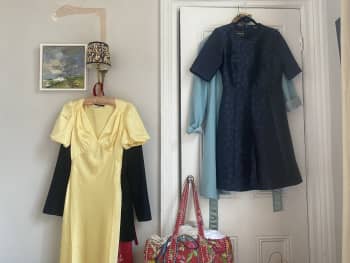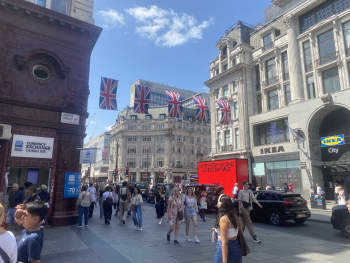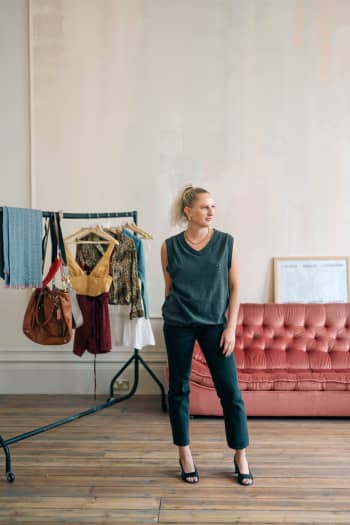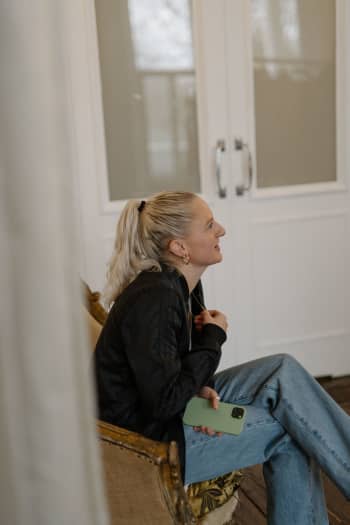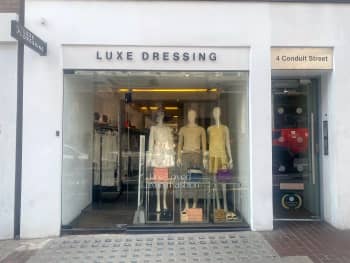Communities of Style
A look into London based antidotes to global fast fashion issues
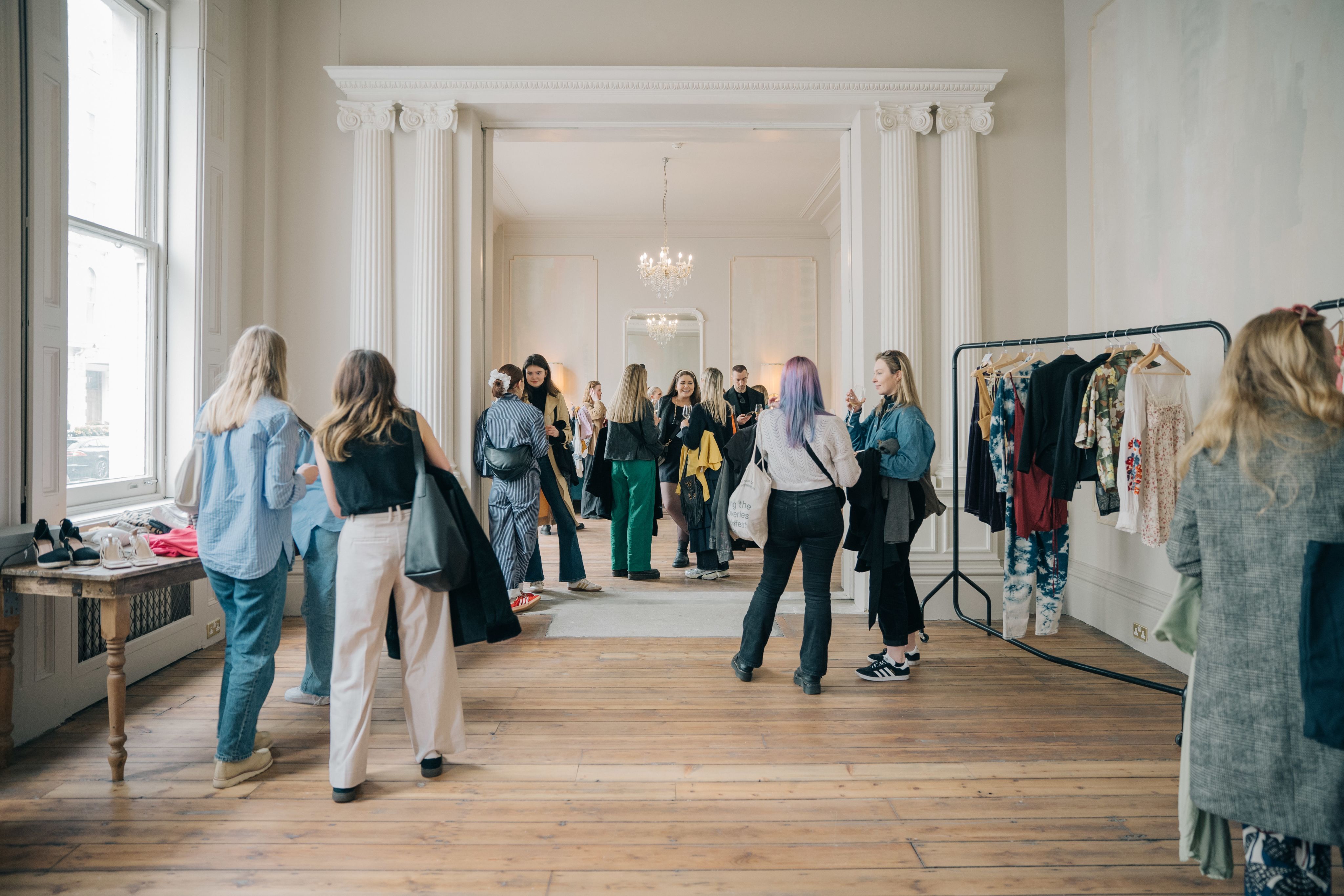
On 15 May this year the Circular Fashion Innovation Network launched a report outlining critical insights and steps forward for UK circular fashion.
The report outlines the practical steps that the brands, government, manufacturers, and investors should be putting into place to move the UK fashion industry towards circularity.
By financially incentivising these brands and creating a recycling friendly infrastructure the report has a positive outlook for change across the UK.
Among its goals are to establish 'A thriving ecosystem of circular start-ups and innovations'.
As sustainability conversations compete with flash in the pan social media micro-trends and the fast fashion industry. Big companies and policy makers fight to keep up while making profit, what are small London initiatives doing to make a difference?
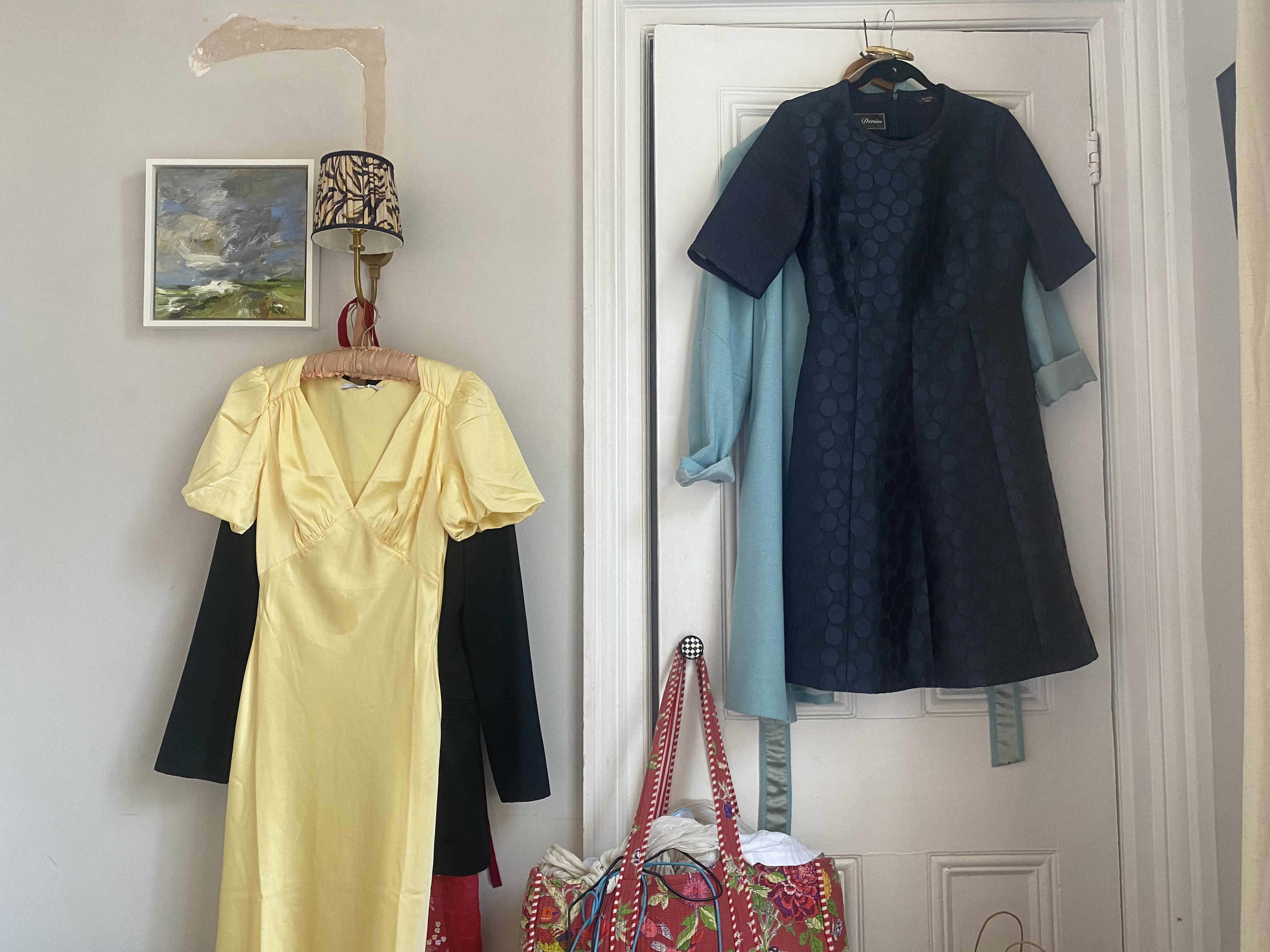
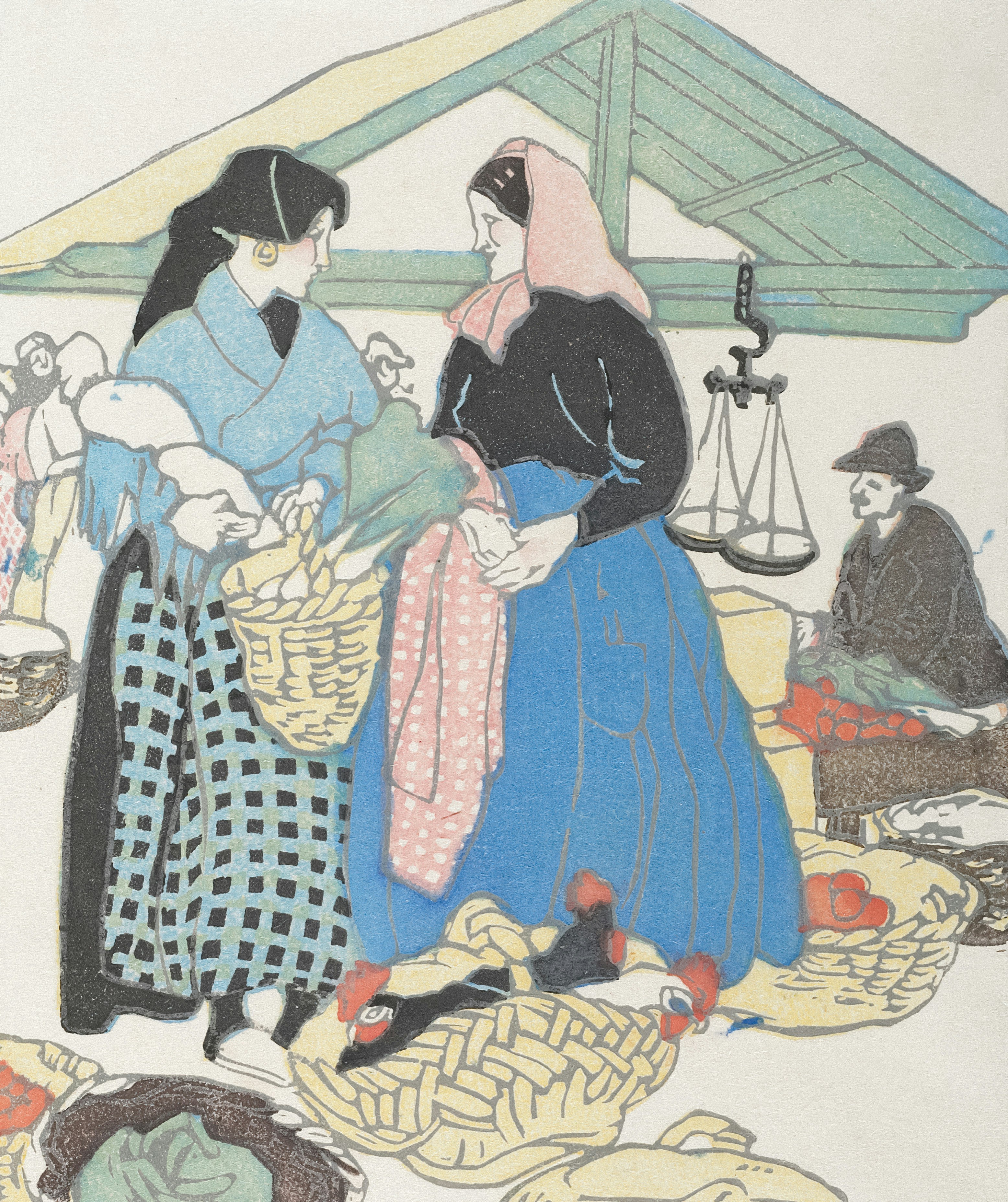
According to the UN: "Should the global population reach 9.6 billion by 2050, the equivalent of almost three planets could be required to provide the natural resources needed to sustain current lifestyles."
As per a 2019 Government Report: "Less than 1% of the materials used to make clothing are recycled into new garments at the end of their lifecycle."
The CFIN report found that: "While 81% of fashion organisations surveyed include circularity in their five-year strategies, 63% of customer-facing initiatives remain in pilot phases."
Leaving ever more clothing to find its way to sites like the Dandora dumpsite outside Nairobi.
Image credit: Anna Stenning
Wanting it all... right now
The way that we buy, wear, and then throw away clothes is - quite literally - unsustainable. According to Fixing fashion: clothing consumption and sustainability, a 2019 government report from the House of Commons Environmental Audit Committee, the UK consumes more clothes per person than any other country in Europe.
The fast fashion business model relies on reacting quickly and cheaply to consumer demands.
Fashion sustainability graduate and marketing assistant at E.L.V Denim, Anna Stenning, 25, said: "Everyone buys very last minute these days and doesn't really think about purchasing for the long term. I think people's mentalities these days are more, oh, what's on trend and what can I get right now. Not going to the vintage stores or going to charity shops and finding a really unique piece you keep forever."
From financial margins to customer communications, big brands are struggling to put circular fashion initiatives into place. The result? Leaning heavily on linear fashion systems which lead to clothing been worn a few times before they fall apart or thrown away.
The proposed solution to this over-consumption is the implementation of circular fashion.
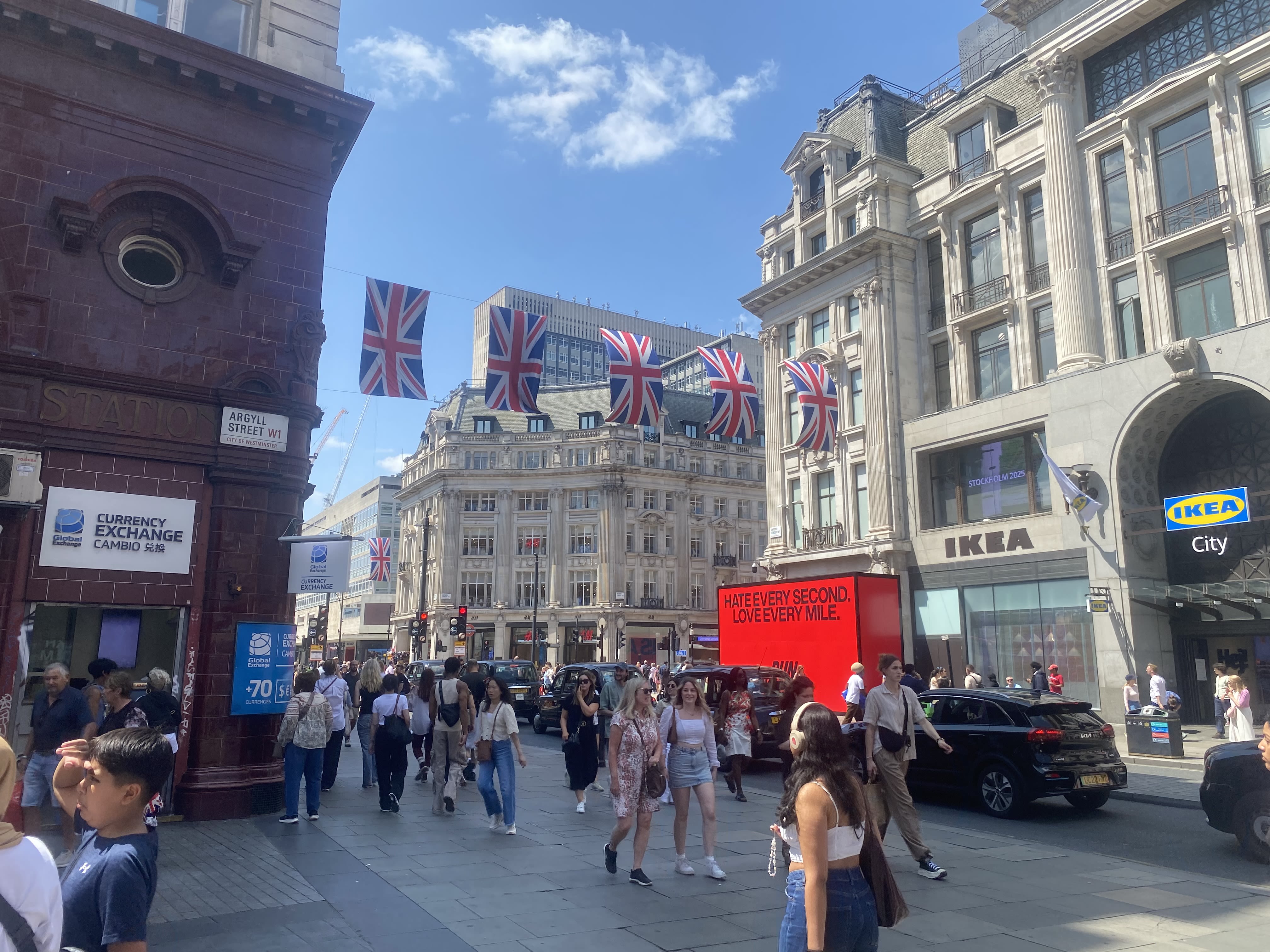


The three pillars
Anna Stenning outlined three key points that underpin circular economy initiatives in fashion production:
1. Make things well
2. Use textiles for as long as possible
3. Reuse and recycle non-wearable textiles locally
One of the strongest advocators of circular economies are the Ellen McArthur Foundation. They aim to encourage and accelerate the adoption of a circular economy for the benefit of everyone.
One means of achieving these aims is through resale and reuse of already made items. Across London and online there are a huge range of brands entirely functioning within the circular fashion sphere who act as the perfect antidote to the lagging fast fashion and high street brands.

Enter the clothes swap...
LOVED AGAIN LONDON
Image credit: George Cudby
Sharing is caring
This idea that community and history hold the key to the future of sustainable fashion is something that Ella Walford was familiar with a young age.
She said: "I grew up in a house with an attic full of just like my grandmother's clothes. She lived with my mum so all of her stuff was in the house. All these amazing coats and handbags and scarfs. I really, really lucked out."
It cemented the idea that clothes are something to be loved, worn, borrowed, and shared again joyfully.
Ella's grandmother -- Image credit: Ella Walford
Ella's grandmother -- Image credit: Ella Walford
Setting up her clothes swap brand Loved Again London was a passion project from the very beginning.
She said: "In these earlier stages, like I definitely tried to keep it like light and fun. I didn't want people to shy away from this idea of sustainability, because it's quite overwhelming. People don't really know how to tackle it."
By placing the focus on finding new friends and having a glass of wine while you browse, Walford gives her community a sense of what its like to live in a house of all female flatmates or grow up with a big sister's cupboard to raid. For her, a circular fashion economy is not only practical, its fun. This desire to connect over clothing is what seperates her vision from the resale giants of depop and Vinted.
As I go to her seasonal clothes swap in Ladbroke Hall she meets me with a big wave and a hug standing amongst the racks in her grandmother's jacket.
She said: "What I think I personally love about Loved Again is that it's not a one night thing. It's that you can have this in your wardrobe for an extended period of time without the guilt if you do want to get rid of it. Because you can just put it back into a swap."
Building a clothes swap community is difficult. How do you convey to your -relatively small but growing - audience what you want in terms of sociability, attitude, and of course the clothes themselves?
For her its all about intention: "When you're really young and you have a £20 allowance, you've got to really think about what you're doing with it. With us, you've got your two items of clothing that you're swapping, so you'll hand them in, they'll get hung up, but you've now got two tokens to spend wisely."
Each item you bring (up to three in her normal structure) is worth a token which you can then 'spend' on something else on the racks. The events happen three times a year - at the changing of the seasons - and offer attendees a chance to freshen up the wardrobe and makes some friends.
The most recent Loved Again London was a collaboration with Female Narratives which not only allowed Walford to expand her audience but brought in founder of rental fashion brand By Rotation, Eshita Kabra-Davies as a speaker.
The collaboration brought about the opportunity to see the business side of sustainable sharing for a website that caters for both high street and high end tastes.
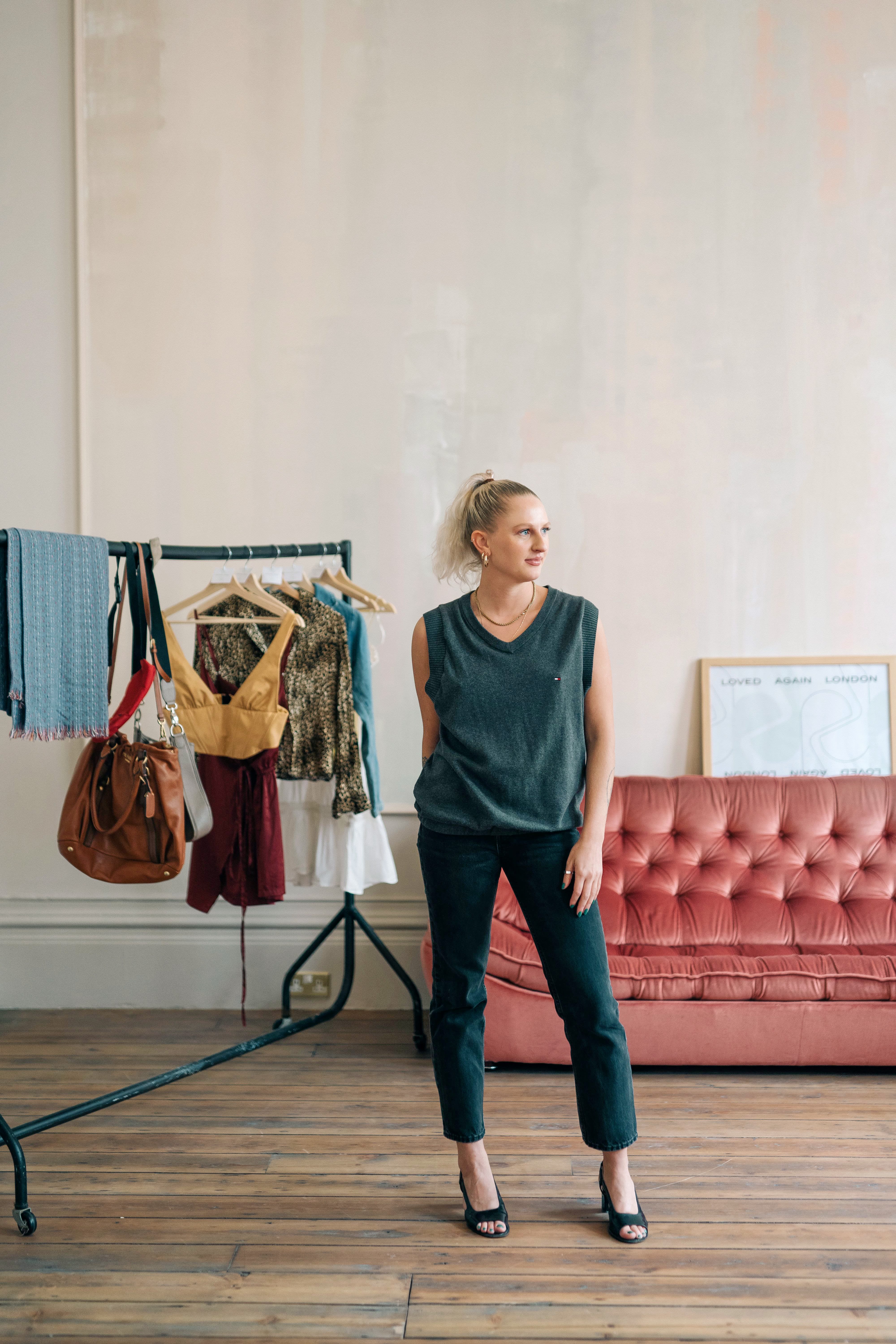

LUXURY CLOTHING CYCLES
LUXE DRESSING

To get an idea of how high quality, long lasting, designer clothes are recirculated I spoke to Leina Kaddouri, 30, who owns and runs Luxe Dressing, a pre-loved designer store and website based in Mayfair, just off Regents Street, one of the most famous shopping streets in the world.
They act as a broker of sorts - taking commission from the sale of luxury goods both online and in person in their store.
The shop has added validation to the brand. Her sellers, including dress designer Youma Lethielleux, love to come into the store to see what other treasures she has stumbled across - to buy as well as sell.
"It's all about creating a real passion," Kaddouri told me.
Kaddouri’s passion shines through in every aspect of her work. When asked about the long hours she puts in, she laughs and says: "I could put a bed in here."
She started the business age 24 from her home, from there it evolved into pop-ups in Knightsbridge and Mayfair before she acquired the store in the heart of London’s shopping district.
Although on a totally different price range than Loved Again London, the mentality behind the brand is almost eerily similar.
As Lena competes with stores like Liberties, Selfridges, Harrods and the stores on New Bond Street to sell luxury goods the second hand market offers something different.
She said: "I would say the difference is the products we have and the trust that we have built."
Lena works with sellers and buyers all over the world to give new life to products from luxury brands. This cycle, known as pre-loved, offers luxury fashion lovers the opportunity to buy items that have been sold out or discontinued and can’t be found elsewhere. They have to be good quality, good condition, and most of all they have to be the real deal.
The whole enterprise is based on trust and most of all community. They host events at the store to foster this sense of togetherness around the brand.
Speaking of those evenings, she said: "Everyone was connecting, saying “we could meet” and its true, we actually create connections. People connect and I think community is everything."
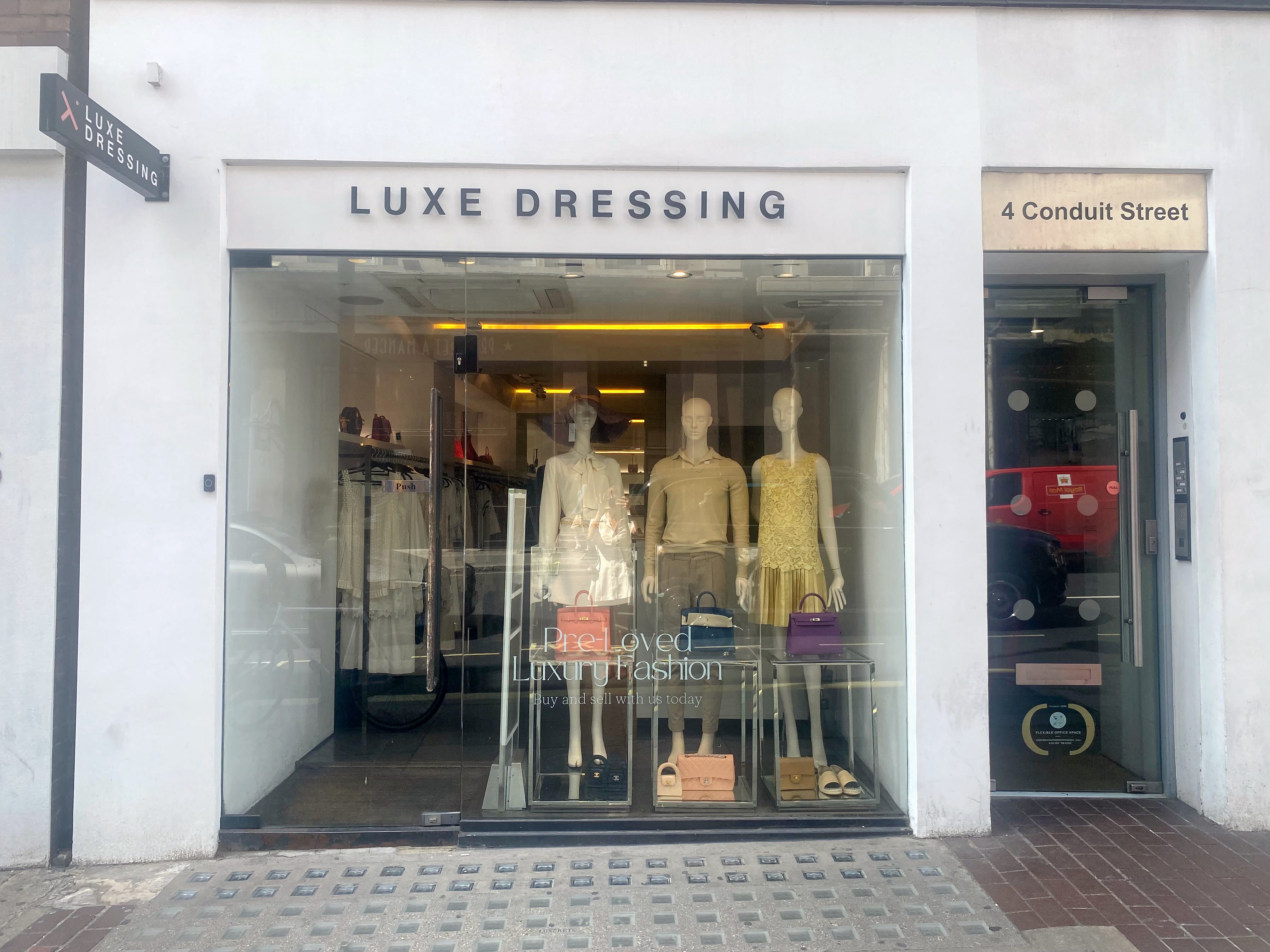
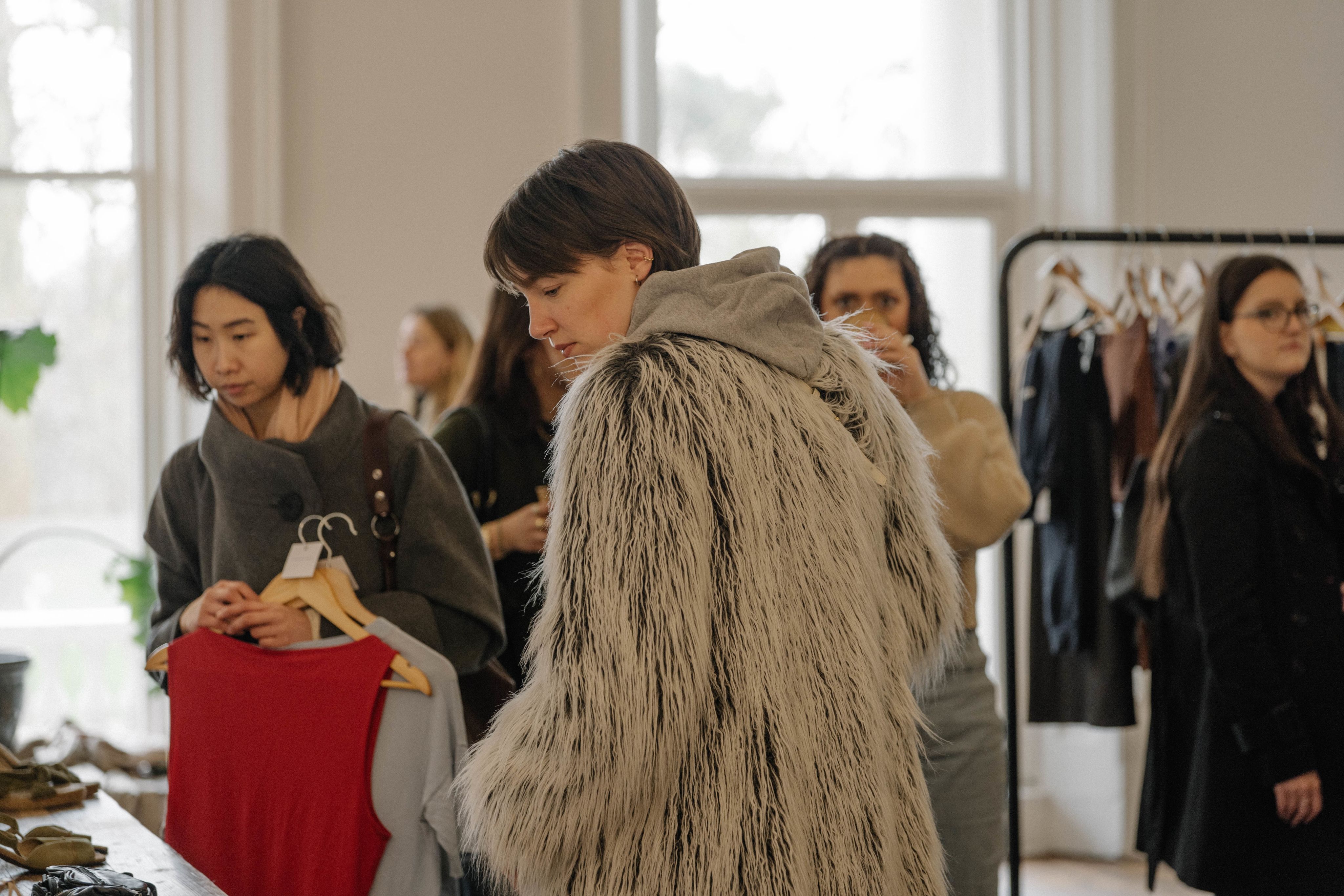
The idea of clothes representing a group is not a new one. From monks to punk rockers, a uniform has always - quite literally - been an identifying force of communities, a means of distinguishing the us from the them. Looking into circular fashion, the same narrative has is true in a different sense: when creating impactful positive change in the fashion world community is everything.
As initiatives and policy campaigns aim to shift the consumerist mindset toward sustainability, it’s often the influence of close-knit friend groups and communities gathered around an idea that quietly drive real change. In fashion especially, trends like thrifting, clothing swaps, and DIY up-cycling, gain momentum not through top-down messaging, but through peer influence—where what’s stylish and what’s sustainable start to overlap in everyday choices.
As Anna Stenning put it as she was telling me about the up-cycled denim brand, E.L.V Denim, she works for: "people really love a story behind what they're wearing."
Clothes with a story — genuinely pre-loved — might just be the perfect way to sell sustainability as more than just a passing trend.
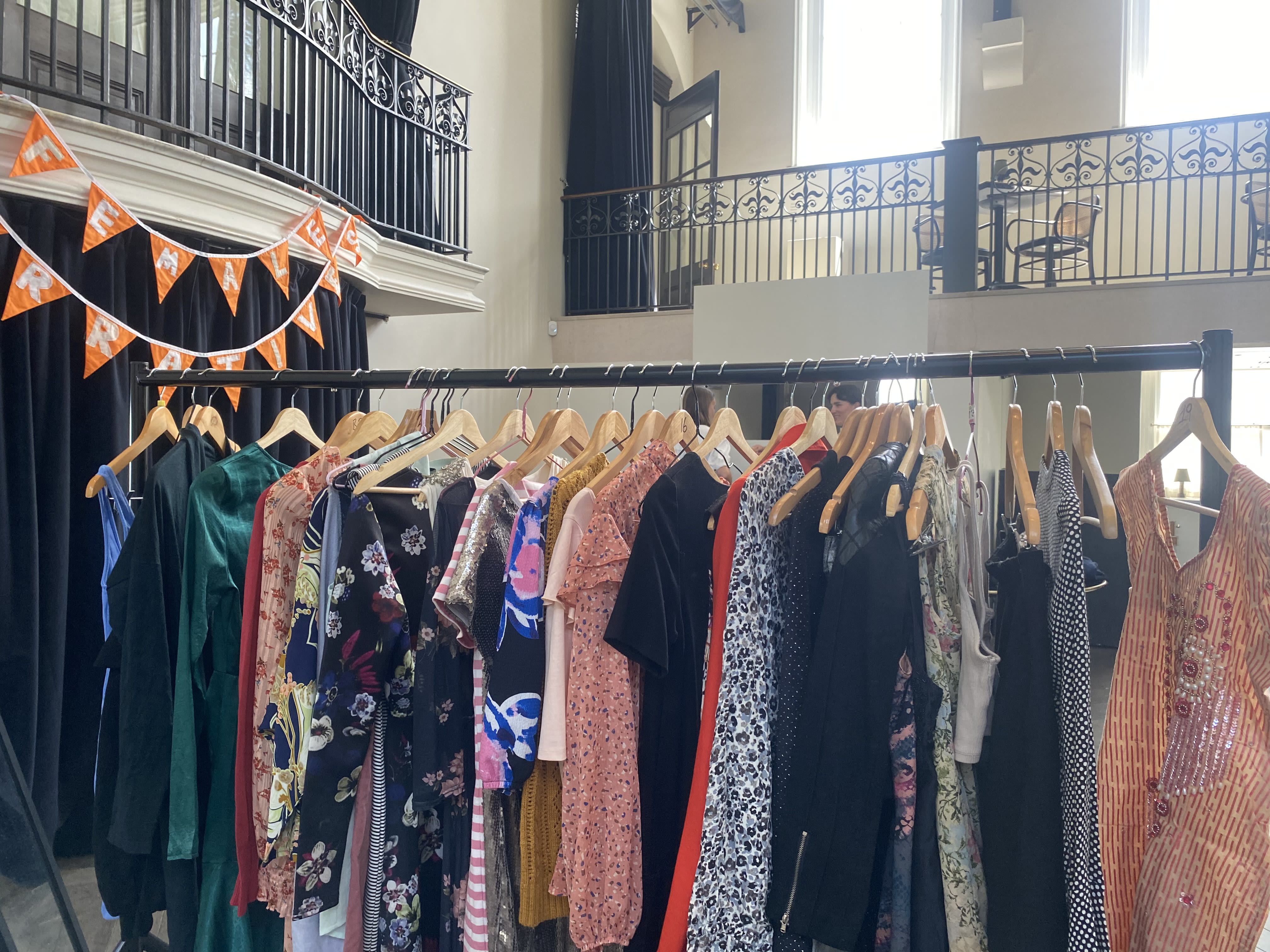
Nothing makes me happier than someone asking where my dress came from and being able to say it was my mum’s
Anna Stenning, Sustainable Design Graduate
Image Credit: Rosie Beveridge

